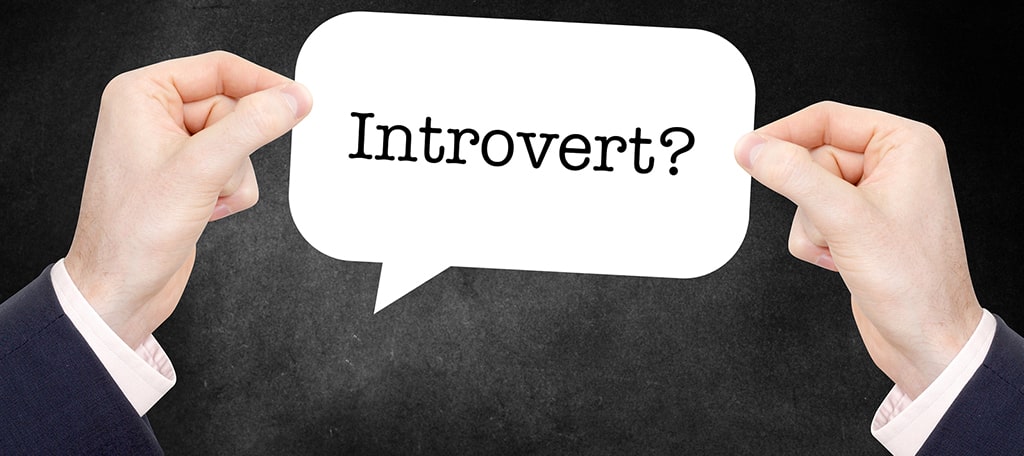
Learning how to network is a crucial step in growing any business. We all know the basics of networking online. But offline networking is a powerful tool that you can effectively use to connect with like-minded people (and potential customers).
The best way to expand your business is to connect and expand your network. The larger your network, the more often you can tap into it for your benefit. And as a bonus, you benefit others as well. When it comes to connections, the return on the investment of your time and money can be impressive.
I’m Already Networking Online, How Is That Different From Networking Offline?

Using social media to network and make connections is great. And there’s no denying the impact that a site like LinkedIn can have on your personal networking.
Networking offline, by definition, is a face-to-face kind of thing, and therefore a much more personal and impactful opportunity. When you speak to someone in person, you can create connections in moments that may take weeks – or never happen at all – online.
And offline networking can work in tandem with your online networking activities. A lot of us at GreenGeeks attend WordPress WordCamps all over the country. You may be surprised to learn that many of the people we speak to at WordCamps will begin to follow our online accounts after we meet in-person. And they’re more likely to interact with us online after a real-world meeting.
Where to Connect to improve your offline networking

The first thing you have to do to foster offline networking is to position yourself. And by that I mean, literally position yourself in front of the people you’d like to network with. How to best accomplish that depends on your business and where people involved in your industry.
That will most likely be professional conferences. But don’t overlook the opportunities in your own backyard. Scouring Facebook Events, Meetup, or even EventBrite can alert you to get-together’s that you didn’t know existed.
Don’t forget to use connections that you already have to find new opportunities. A quick phone call to check in gives you the opportunity to ask someone if they are attending any upcoming conferences. This can lead you to new venues.
Not to mention giving you a leg up when you get there, as you’ll already have at least one connection.
Make the Most of Your Networking Time

When you’re deciding where to go for the best networking opportunities, ask yourself what you want to achieve by networking. Do you want to build a large network of relatively casual business contacts, or are you looking for customers (or people who can connect you to customers)?
You may have a few goals, but when you identify them, it’s easier to determine what kind of gatherings will be most useful to you.
If you’re looking for customers, for example, you don’t want to fly to the other side of the country and attend a conference full of managers and C-suite types.
On the other hand, if you’re looking for opportunities to expand your business, you’re probably better off getting onto that plane than you are attending a meet up for a user group.
How to Talk Business and Still Make a Human Connection

Let’s be honest, our primary goal when networking is to benefit ourselves. To grow our business, or make personal connections that can help us land a better position. But the best way to benefit yourself is to be a benefit to others.
To that end, it’s best to approach conversations with new connections as conversations with a person who you can potentially do a favor for. That won’t always be the case, but if you go into a conversation with an open mind and the idea of being helpful, you’ll find that most people will naturally reciprocate.
If you serve as a connector, others will naturally want to connect you. If you’re in a position to give someone a potentially valuable lead, they’re going to try to do the same for you. It’s called “the rule of reciprocity.” It’s baked into our human nature, which makes it great for networking.
Sure, you can use it as a tool (did you know if a server in a restaurant includes a mint with your bill you are likely to tip more?), but what I’m suggesting is to provide something of value to someone else without expecting reciprocity.
You’re not always going to get it.
But it never hurts to be of service to another person. And that’s a very personal, emotional thing, even when you do it in a business context. If you do it in a selfless way, the reciprocity will flow.
Business Cards Are Still a Relevant and Useful Thing

The internet and social media have made a long list of business practices obsolete. But one of the oldest business practices, handing someone your business card, is still an effective way to connect.
People tend to hang on to business cards if they think they might need to contact you in the future. And as I mentioned earlier, they can connect you to people online as well.
Designing a unique business card can make you stand out. I once had old cereal boxes cut into 3.5 x 2-inch business card size and letterpressed my name and contact information onto the plain cardboard side.
I know, it’s weird.
But I had people come up to me two or three years after I’d handed them one of those cards and tell me they still had it. And that they showed it to people. And that’s what a business card is for, to get people to remember you.
Someone gave me a business card stamped on metal once, and you can bet I hung onto that card for a long time (and showed it to many people).
If you can afford to be that unique, go for it! Don’t let “unique” go too far though. I’ve thrown away many business cards that were larger than the standard size or were elaborate folding things that didn’t want to sit flat in my business card pile.
Know when to make the move to give someone your card. Walking up to someone and handing them your card before you’re involved in a conversation can make them feel awkward.
But once you do start talking, it’s easy to slip, “You know, while I’m thinking of it, here’s my card,” into the conversation. It’s low key and unforced and will never (okay, rarely) be rejected.
Beyond the Business Card

I once heard Dana White, the President of the Ultimate Fighting Championship (who knew brutal, hand-to-hand combat had a president?), give a keynote speech at a social media conference. He told a great story about inadvertently Tweeting out his direct phone number. At first, he panicked and asked his social media person how to “take it back.”
He was told he could delete the Tweet, but it was likely that many people had already copied it, so there was no way to take it back completely. He thought about it for a minute, and instead of deleting the Tweet, White decided to answer the phone calls that came in.
The minute I heard that story, I knew that Dana White was a social media genius.
He didn’t get nearly as many calls as he expected. Most people called to see if the number really went directly to him and were shocked and didn’t really have anything to say when he picked up. But almost everyone who called and talked to him went on to Tweet about it. Or blog about it.
Generally telling as many people as they could about the interaction.
At the time, White didn’t know the difference between a DM and a public Tweet, but he knew enough to recognize when he’d stumbled onto something different that he could use to his advantage.
His story inspired me in a lot of ways, mainly reminding me that direct connection is always effective. And if he didn’t get an overwhelming number of calls after Tweeting his number to his millions of followers, I certainly wasn’t going to be inundated with calls if I Tweeted my number to my few thousand.
So That’s When I Tweeted out the Direct Number to the Phone on My Desk
And not only once. I Tweeted it all the time, and it was a wickedly effective tool.
As everyone reading this knows, as a customer, our odds of speaking to the people who are—or perceive themselves to be—”at the top” of a company are slim to none. Which is unfortunate since they usually have the power to quickly solve problems.
In my role at the time, I wasn’t required to talk to customers, but I knew it could benefit the business if I did. Not because I was so awesome, but because I could speak to a customer who was experiencing a problem and then, by benefit of my position in the company, walk across the hall and get the problem solved.
I probably don’t have to tell you how effective that was. The customers I helped became loyal and vocal proponents of the business. The hour or two a week I spent talking to people and solving their problems may have actually reaped more benefits than what I did the rest of the time.
I took that idea even further when I was talking to people face to face. When someone learned that I worked for their website hosting company, often they would tell me about some kind of problem they had experienced. They knew I didn’t work on the technical side of the house, but every time I heard a story like that, I took out my personal phone and said, “Here’s my number. Call me if you ever have that problem again.”
It sounds scary, doesn’t it? Giving your personal phone number to a customer. But no one ever abused the access. They were happy, I was happy and the company’s reputation skyrocketed.
Business cards are an excellent, inexpensive networking tool. But don’t overlook an even more personal, unexpected connection when it’s appropriate.
The Elevator Pitch

I’m a fan of natural conversation. Finding common ground with someone and having an unforced discussion; It’s the best way to connect. But a relatively long, natural conversation isn’t always possible. Especially in many networking situations.
That’s why you should always have an “elevator pitch” standing by to use when you need it.
An elevator pitch is a description of what you do, or what you want someone to do for you, boiled down to a short, concise statement or two. Something that you could, theoretically, say to someone on a short elevator trip.
Writing an elevator pitch is about a million and a half times harder than it sounds. Take some time to work on one for yourself or your business.
Don’t lead a conversation with it. Don’t recite it whenever you meet someone. Do everything you can to make a personal connection first. But when time is extremely limited, don’t hesitate to go to your elevator pitch.
The Secret to a Long Life Is Knowing When It’s Time to Go

Okay, so now we know that offline networking is great, and speaking with people face to face is effective.
But I’d be remiss if I didn’t point out that networking can be overdone.
Try to remember that some people prefer online interaction, even if they’re meeting you in person. Perhaps not surprisingly, you’ll find that this applies more often when you’re speaking to people in highly technical roles or vocations.
And even if they do enjoy social interaction, in most offline networking situations, the people you’re speaking with don’t have an unlimited amount of time. Be careful not to monopolize someone’s attention in a crowded room, or to continue a conversation when you see a sign that the other person may be finished.
To be an effective offline networker, you have to learn to pick up on the cues that people may be sending. The last thing you want to do is leave someone with a bad impression after an otherwise good conversation. One of the easiest ways to make that mistake is to be unaware that the other person needs to move on.
I’ve seen the following many times while working a table at a conference. An attendee at the next table tries to get away by saying something like, “Well, okay…” but the person behind the table (who, granted, is usually trying to sell them something) says, “Sure, great to meet you, but one more thing before you go…”
Now the poor attendee who wanted to walk away feels like they can’t walk away, and they’re ultimately left with a negative impression of the interaction.
It’s tempting to want to cram in as much information as you can, especially when speaking with a potential customer. But resist the temptation. If someone is telling you they want to leave, either verbally or non-verbally, thank them and part on good terms.
Remember your elevator pitch, and why it’s effective.
But I’m an Introvert, I Can’t Do Any of This Stuff

I’ve been talking about a lot of ways to get yourself into a position to have a conversation, but I haven’t given many examples of conversation starters or sparks that you can memorize and use.
I’ve done that on purpose because I have a strong belief that a conversation that begins with a tricky sort of ice-breaker starts at a disadvantage. It has a greater chance of going nowhere than conversations that start organically.
When I was younger, I was as introverted as a person could be. My picture was in the dictionary when you looked up “introvert.” If someone had given me a bag of tricks that would have made me seem less weird and awkward I would have been eternally grateful to receive them.
But in more than a decade of attending business and social media conferences I’ve discovered something.
Just about everyone in the room feels inhibited somehow.
Many of them even more than you. Those four people over there by the vodka ice fountain laughing and slapping each other on the back? Three of them are terrified.
The thing about a room that’s specifically set aside for networking is everyone who’s there came to meet you. Not you, specifically (though that would be pretty cool, we’ll have to figure out how to set that up), but complete strangers.
You’re all in that room for the same reason, offline networking. To talk to people you don’t know. It’s an unnatural situation, and everyone knows it.
Want to know how most of my conversations start in those rooms? I look at someone and smile and say, “How’s it going?”
That’s it. That’s all I say.
And You’re Telling Me That Actually Works?
I’m promising you that it actually works.
Every time I say, “How’s it going?” it opens up a conversation. And a lot of those conversations end up being valuable to me in one way or another, and hopefully of value to the person I’m talking with.
You don’t have to be an extrovert, expert or a politician to benefit from offline networking. All you have to do is prepare yourself to speak about things that can benefit you or your business.
Prepare yourself to effectively connect with people and get yourself into the room.

Great article